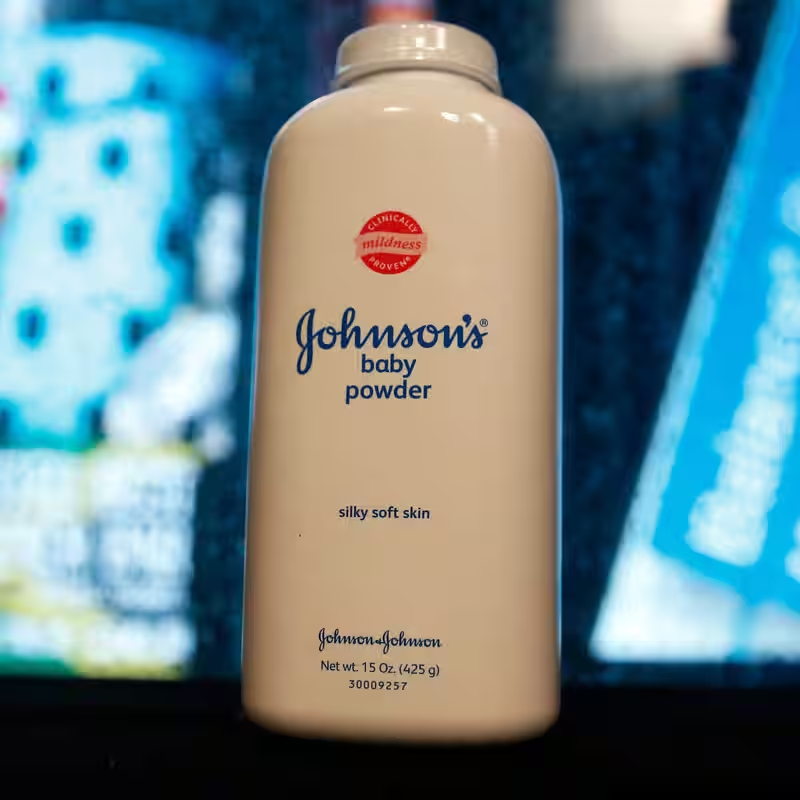Focus Keyword: Johnson & Johnson talc lawsuit
In a landmark ruling that could reshape the future of one of America’s most iconic consumer brands, a California jury has ordered Johnson & Johnson to pay $966 million in damages in the latest Johnson & Johnson talc lawsuit. The case centers on a woman who died from mesothelioma—a rare and aggressive cancer linked to asbestos exposure—after decades of using the company’s baby powder and other talc-based products .
Table of Contents
- Case Details: A Family’s Fight for Justice
- The Link Between Talc and Asbestos
- Johnson & Johnson’s Response and Legal Strategy
- Broader Impact on the Talc Litigation Landscape
- What Consumers Should Know About Talc Products
Case Details: A Family’s Fight for Justice
The plaintiff in this case was the family of a California woman who passed away from mesothelioma in 2023. According to court documents, she had used Johnson & Johnson’s talcum powder products regularly for personal hygiene since childhood. Her family argued that the company knew for decades that its talc could be contaminated with asbestos—a known carcinogen—but failed to warn consumers or remove the products from shelves .
After weeks of testimony and expert witness accounts, the jury sided overwhelmingly with the plaintiffs, awarding $966 million in compensatory and punitive damages. It’s one of the largest verdicts to date in the sprawling talc litigation against the healthcare giant.
The Link Between Talc and Asbestos
Talc and asbestos are naturally occurring minerals that are often found in close proximity in the earth. When mined, talc can become contaminated with asbestos fibers. Inhalation or prolonged skin exposure to asbestos is a well-established cause of mesothelioma.
The U.S. Food and Drug Administration (FDA) has repeatedly found trace amounts of asbestos in some talc products, including those marketed by Johnson & Johnson. Internal company documents, revealed in prior lawsuits, suggest executives were aware of contamination risks as early as the 1970s .
Johnson & Johnson’s Response and Legal Strategy
Johnson & Johnson continues to deny any wrongdoing. In a statement following the verdict, the company called the decision “unjust and inconsistent with the science,” and vowed to appeal. “We have deep sympathy for anyone suffering from cancer,” a spokesperson said, “but decades of independent scientific evaluations confirm that our talc is safe and does not contain asbestos.”
This stance has remained consistent across thousands of similar lawsuits. However, critics argue that J&J’s aggressive legal tactics—including the controversial use of a bankruptcy maneuver known as the “Texas two-step”—have delayed justice for victims and their families .
Broader Impact on the Talc Litigation Landscape
This latest Johnson & Johnson talc lawsuit adds to a growing pile of legal and financial pressure on the company. To date, J&J faces over 60,000 claims related to its talc products. In 2023, it proposed a $9 billion settlement fund to resolve current and future claims, but many plaintiffs rejected the offer, citing insufficient accountability.
Notably, Johnson & Johnson discontinued talc-based baby powder in the U.S. and Canada in 2023, shifting to a cornstarch-based formula. But globally, talc products are still sold in some markets, keeping the controversy alive.
What Consumers Should Know About Talc Products
If you’ve used talc-based powders—especially older formulations—it’s worth discussing potential exposure with a healthcare provider. While not everyone exposed to asbestos develops mesothelioma, the disease has a long latency period (often 20–50 years) and limited treatment options once diagnosed.
Regulatory agencies like the FDA and the Environmental Working Group (EWG) recommend opting for talc-free alternatives, particularly for genital or infant use.




